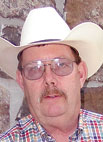
Will Qualls and his wife, Megan, run a cow/calf operation, and raise exotic cattle as well as many other animals.
HASKELL, OKLA. – Will Qualls is a mechanical engineer by trade. When he graduated from Oklahoma State University, he believed that was going to be the direction his career and life were headed.
Life, however, rarely goes as planned. Will is currently the co-owner and operator of Dream Catcher Cattle Ranch, which sits on 1,000 acres in Haskell, Okla. He and his wife, Megan Barton, have been running the aptly named ranch for almost three years.
“In many ways, it is the manifestation of our dreams,” Will said. “While the dream catcher attracts and catches all sorts of dreams and thoughts into its webs, good dreams pass through and gently slide down the feathers to comfort the sleeper below. In the same way, our furry cows are a source of comfort in their beauty and personality.”
The land Dream Catcher Ranch sits on has been in the Qualls family since 1944. That’s when his grandfather moved to Haskell and began farming the land.
“My dad farmed and ranched,” Will said. “He was also an engineer. When my mom and dad became elderly and needed some help, I moved back home. I took over the ranch and that created an opportunity for me to help mom and dad when they needed.”
That was also around the time Will and Megan began to grow as a couple and soon married.
Yet, the couple decided to be different when they began to form the idea of Dream Catcher Ranch. They wanted to be more diverse than the typical ranch.
One side of the ranch is the cow/calf operation with approximately 150 commercial Angus and Angus cross cattle.
“The commercial cattle go to market for beef production,” Will said.
On the specialty side, the Dream Catcher Ranch has approximately 50 head of exotic cattle. Breeds include Scottish Highland, Belted Galloway and British White. Unlike commercial cattle, they breed primarily registered exotic cattle and sell seedstock, but have also found a market for companion animals.
“We’ve sold to several small farms as well as people who just want a pet or companion animal,” Will said. “There is a growing number of people who are moving to 2-, 5-, 10-acre plots of land that want a couple animals in their backyard.”
Unlike some producers in the industry who sell baby calves too soon, Dream Catcher Cattle Ranch follows strict protocols.
“We will sell them when they are a week to a month old. The buyer will put down a deposit and we’ll hold that animal until it’s weaned,” Will said. “We do not pull healthy calves off healthy mommas. It’s not good for either one. I think what we have come up with is a good middle ground. You can pick out your baby, and we will send you a photo or video anytime you request. Then, we will hold it [the calf] until it’s time to be weaned.”
According to Will, having exotic breeds was Megan’s brainchild.

“She loved the British Whites and the Highlands,” Will said. “She actually bought two of each about the time we met. I think she may have seen a business opportunity, but at the time it didn’t matter because she just loved the cattle and wanted more. Arguably, it was her love for the animals and the desire to have them and my willingness to make her happy, that led us into this.”
It was also Megan who wanted to bring in other animals besides cattle to the Dream Catcher Cattle Ranch. This includes miniature donkeys, Babydoll Southdown sheep, llamas, alpacas, and a camel named Louise. As a result, the ranch has grown into a menagerie in the middle of Oklahoma.
They also have two young kangaroos! They are just for Megan’s enjoyment. She wanted one, so they got a couple. However, according to Will, they are considering monetizing the roos. That could include breeding kangaroos and/or creating a petting zoo type atmosphere in which people can come out and just spend time with the baby kangaroos.
Whether it’s the Angus or exotic stock, Will said the cattle primarily eat the same food.
“For the most part, they all graze on grass,” Will explained. “We have a large number of acres set aside for hay production. That allows us to support the animals. There are some things we must consider. For example, sheep can’t consume copper; it’s toxic to them. We use a four-way mix which is copper-free. Pretty much all the animals eat that, even the chickens. That said, the mineral blocks must be separated.”
They produce just enough hay on their land to feed their stock, and not much more. So, they do not have to purchase hay. That is one of the reasons Will and Megan don’t foresee Dream Catcher Ranch getting much larger.
“When we first started buying Highlands, they were much cheaper than they are now. The price of Scottish Highland cattle has at least doubled in the last two years. Many other exotics have seen similar price increases,” Will said. “We have the ability to shrink or grow the different herds of animals based upon the market. So, if the Highland market remains strong and the prices are very good, we will grow that herd over the others.
“We will maintain an overall herd count of approximately 200 head of cattle,” Will said. “The question is which one will increase, and which one will decrease. The market will dictate our future plans.”







